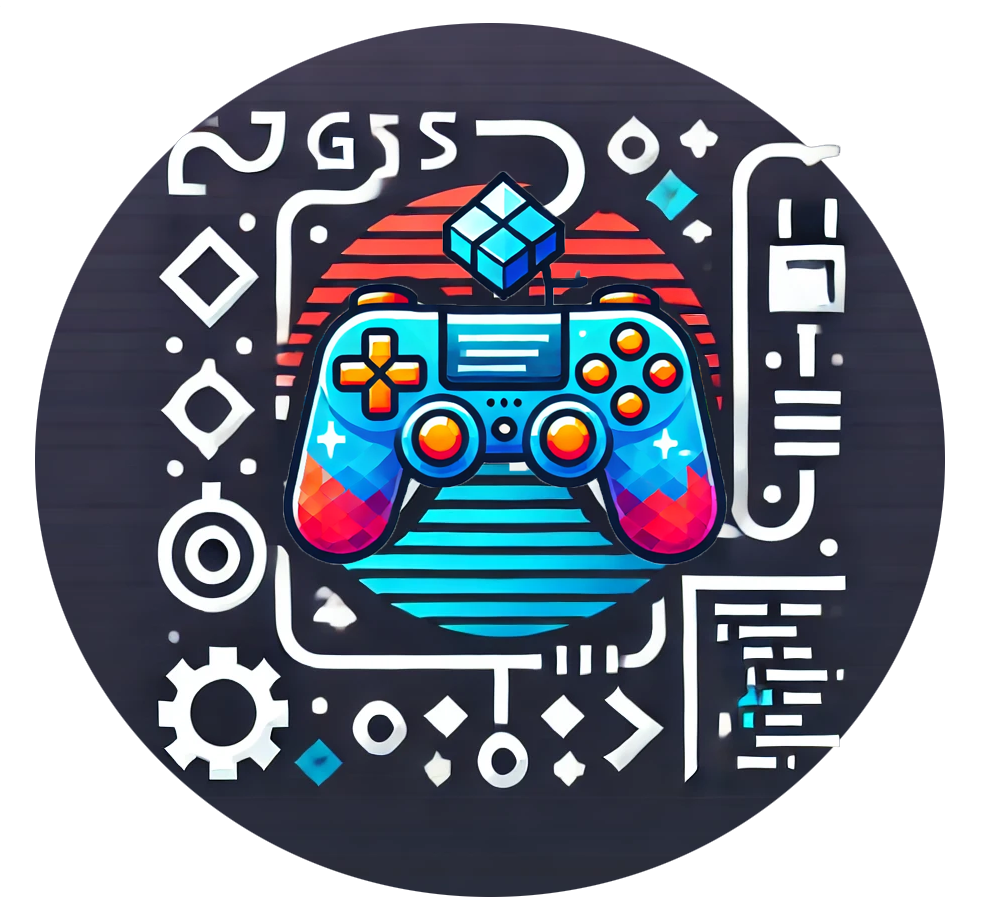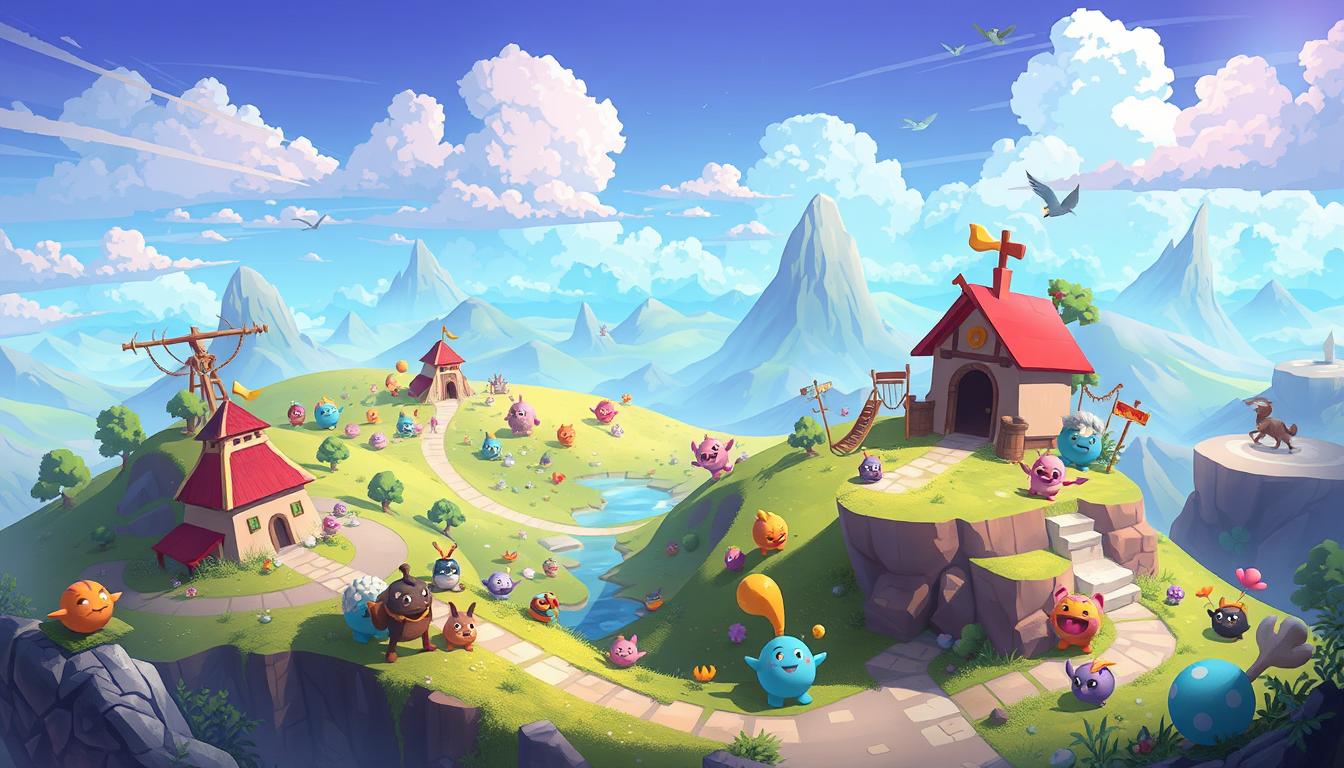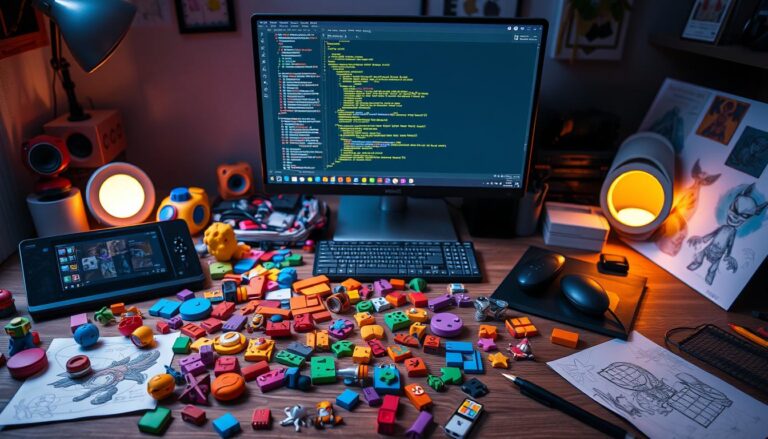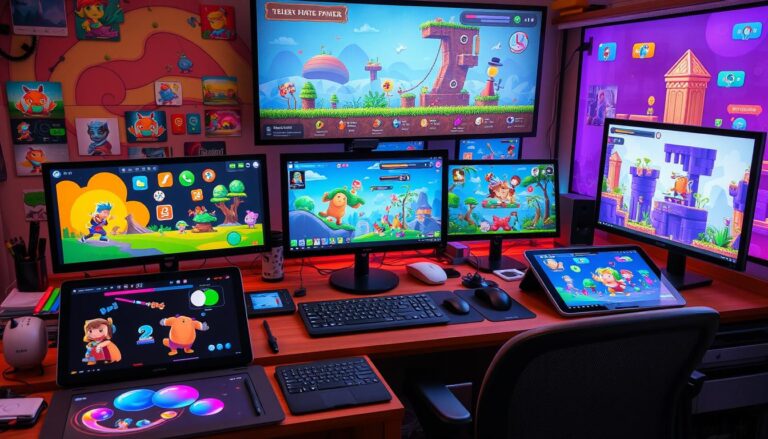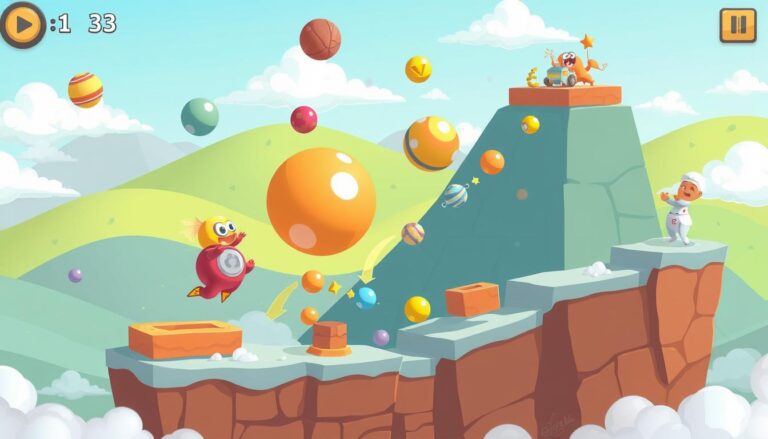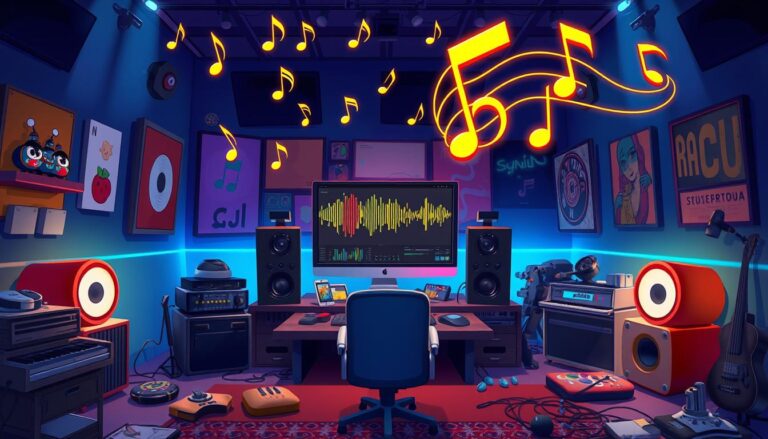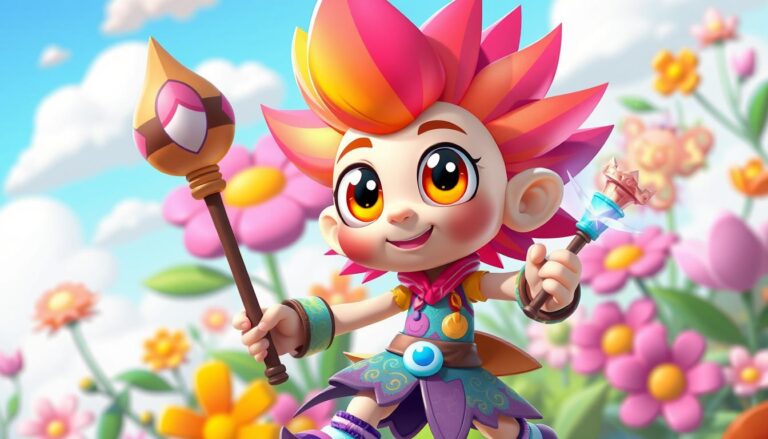What Are the Essential Tips for 2D Game Art and Design?
The art and design of 2D games are key to the gaming experience. They affect the game’s look, how it works, and its marketing. 2D game art creates the game’s atmosphere and mood, pulling players into the game’s world.
The choice between 2D and 3D art styles depends on the game’s type and the studio’s preference.
Games like Ori and the Blind Forest, Limbo, and Shovel Knight have won fans with their beautiful visuals and exciting gameplay. Making 2D game art means picking the right style, making the needed assets, and using the best software tools.
Whether you’re into 2D Game Development, Sprite Animation, or using Game Engines, knowing the key tips and best practices is vital. It ensures a game that’s both captivating and visually stunning.
Understanding the Fundamentals of 2D Game Art
In the gaming world, how a 2D game looks is key. Good 2D game art makes the game look great and feel right. It’s important for developers to know the basics of 2D game art to make games that players love.
The Role of Visual Appeal in Gaming
Visual appeal draws players in and helps market games. A game’s art can grab attention and make players want to play more. It also helps players feel connected to the game, keeping them coming back.
Differences Between 2D and 3D Art Styles
2D and 3D art styles are different, and both have their own strengths. 2D art can offer unique looks and gameplay that 3D can’t. Choosing the right style depends on the game’s design and what the player should feel.
Impact on Player Experience
The art style of a game greatly affects the player’s experience. It shapes the game’s look, feel, and how interactive it is. Knowing about color, composition, and design is key to making 2D art that enhances the game.
Creating Tile Maps, Collision Detection, and Game Physics are all part of 2D game art. By mastering these basics, developers can make games that players will remember. This is how you create unforgettable gaming experiences.
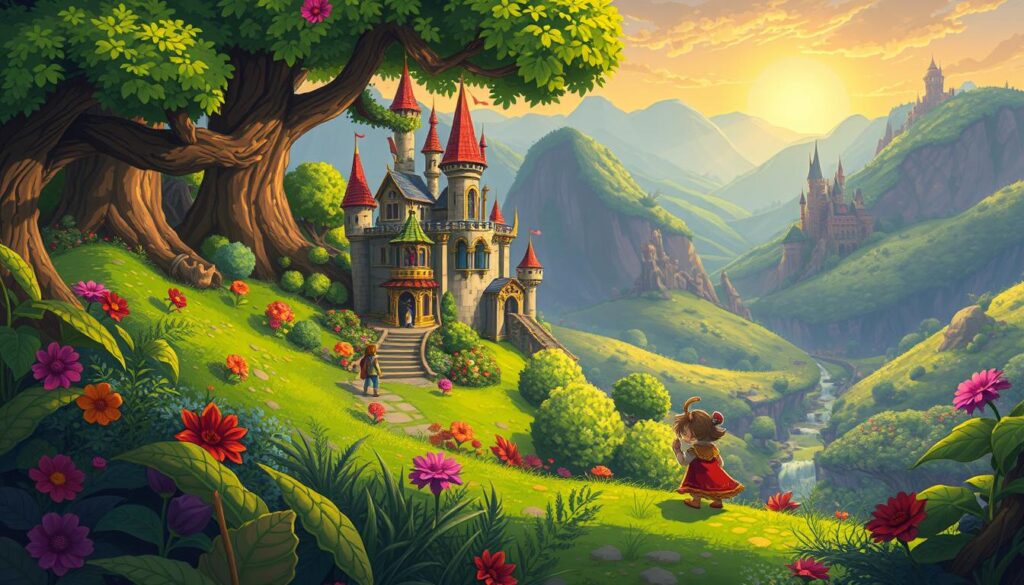
Popular 2D Art Styles in Game Development
The world of 2D game development is full of different art styles. Each style has its own charm and fits well with various game genres. From pixel art to vector graphics, the 2D game art landscape offers a wide range of visuals for players.
Pixel art is a classic style that requires a lot of detail and uses few colors. It’s loved in indie games for its nostalgic feel. Games like Fez, To the Moon, Undertale, and Owlboy showcase its charm.
Isometric art mixes 2D and 3D, perfect for strategy games. It lets developers create detailed worlds that pull players into a unique space.
Vector art is great for games because its graphics look good at any size. Games like Steamworlds Heist, Red Alarm, The Banner Saga, and Ghost Trick use this style.
The cel-shaded style looks like comic books and adds depth to games. It makes both environments and game assets stand out.
Flat art uses simple shapes and bright colors. It’s perfect for UI in casual and mobile games, where simplicity is key.
The love for 2D art and animation in games shows its lasting appeal. As tech advances, level design and asset management in 2D games keep players engaged with their variety and beauty.
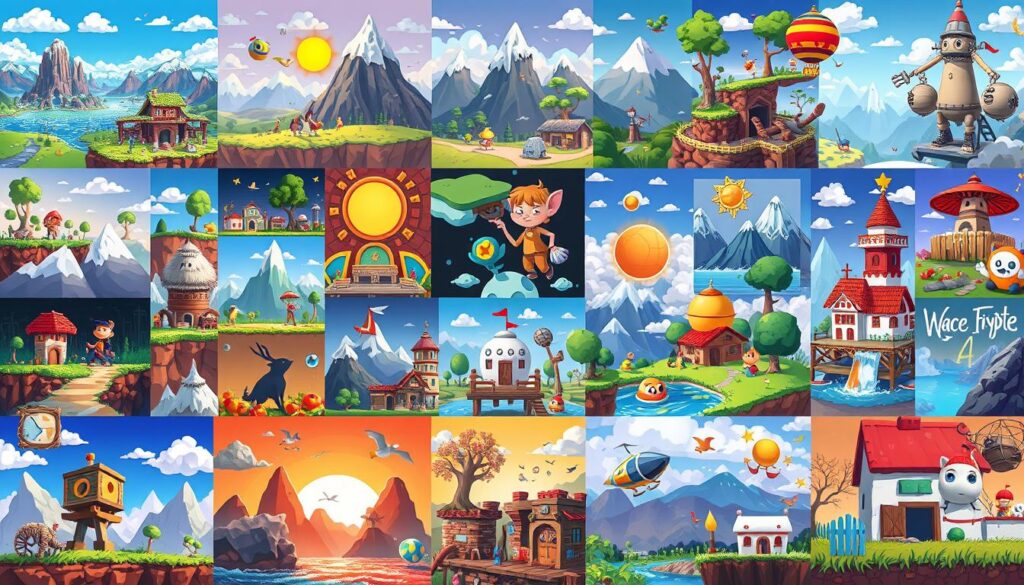
Essential Tools and Software for 2D Game Development
Making great 2D games needs the right tools and software. There are many options, from design programs to tools for making assets and animations. Let’s look at what you need to make your 2D game stand out.
Industry-Standard Design Software
Adobe’s tools are key for 2D game art. Photoshop is great for editing photos, digital painting, and making textures. Illustrator is perfect for vector illustrations, like characters and UI designs. CorelDraw is also important for concept art and promotional materials.
Sketchbook and Inkscape (a free option) are good for designing characters, textures, and UI elements. They make it easy to get started.
Asset Creation Tools
Creating game assets is crucial. Unity and Unreal Engine are top choices for 2D game development. They offer lots of features and resources.
GameMaker Studio 2 and Stencyl are made for 2D games. They have drag-and-drop interfaces that make it easy to manage and use assets.
Animation Programs
Animation is key for 2D games. Spine and Dragonbones are tools made just for 2D animation. They work well with game engines for smooth animations.
Animate CC is part of Adobe Creative Cloud. It’s a strong tool for vector-based animation in 2D games.
Using these tools, developers can make games that look amazing. They can create engaging experiences that keep players coming back for more.
Character and Environment Design Principles
Crafting compelling characters and environments is key in 2D game development. Character design focuses on anatomy, proportions, and personality. Sprite Animation and dynamic poses make characters come alive, engaging players. Environment design creates immersive worlds that match the game’s level design.
Props and interactive objects add depth and realism to environments. Keeping the art style consistent across characters and environments is vital. Developers must think about the audience and genre to create a cohesive game world.
Experts start character design with research and many iterations. They use Tile Maps, perspective, and texturing to add depth. Collaboration between art and animation teams is essential for creating appealing characters and environments.
Character modeling includes creating “model sheets” for the hero from different angles. Lighting sets the mood and atmosphere of the 2D art. Characters must be distinct and memorable to engage players.
Game art design is crucial in video game development. Studios invest a lot in creating amazing art for their games. Iconic characters, like those created by Shigeru Miyamoto, have become cultural icons, boosting the industry’s success.
Technical Aspects of 2D Game Development
Creating engaging 2D games needs a deep understanding of technical details. Developers must optimize assets and use game engines well. This ensures games run smoothly and look great.
Managing file formats and resolution is key. The right file types, like PNG or SVG, and correct image sizes are crucial. Sprite animation and tile map creation are also important for the game world.
Collision Detection is a vital skill. It helps detect and handle collisions between game objects. This makes the game feel more real and fun.
Understanding Game Physics is also essential. It simulates how objects move and interact. This adds to the game’s realism and feel.
Keeping visual quality high while optimizing performance is a big challenge. Developers must manage asset loading and texture compression. This ensures games work well on many devices.
By mastering these technical skills, 2D game developers can make games that grab players’ attention. These games can stand out in a crowded market.
Conclusion
Making great 2D game art needs a mix of talent, technical skills, and game design knowledge. Artists must keep learning and practicing. This helps them improve and keep up with new trends and tools.
Good 2D game making happens when artists, designers, and programmers work together well. They use their skills to make games that are both fun and beautiful. This teamwork creates games that players love.
The gaming world is always changing, and there’s always a need for talented 2D game artists and designers. Especially in mobile games, where 2D graphics are affordable and easy to use. By getting good at 2D game art, artists can lead in this exciting field. They help make games that players will always remember.
